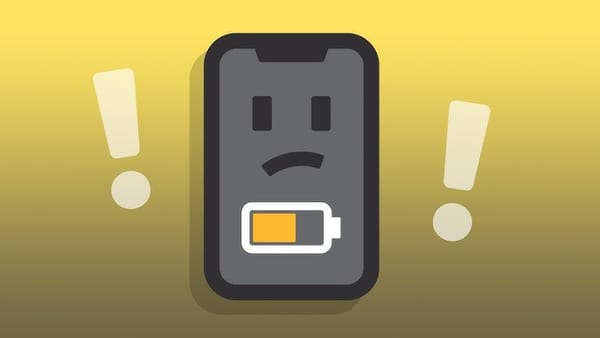Why You’re Not Losing Weight: Fat Loss Science Explained
Understand the science of fat loss through energy balance. Cut through diet myths with the truth about calories, metabolism, and weight change.

Understanding Energy Balance
Fat loss works by creating a calorie deficit, where you consume fewer calories than your body burns. This forces your body to use stored fat for energy, leading to weight loss.
Think of it like a bank account: if you spend more than you deposit, you draw on reserves (fat).
Diet Effectiveness
Different diets, like keto or vegan, work by reducing calorie intake, not by magic. A 2009 study showed similar weight loss across diets when calories were controlled, highlighting that the deficit, not the diet type, matters.
Common Myths
Myths like "starvation mode" (where extreme calorie cuts supposedly halt weight loss) are largely exaggerated. While metabolism can slow, weight loss continues with a deficit. Eating every 3 hours isn’t necessary; total calories, not frequency, drive results. "Clean" foods still contribute to calorie totals, so they matter for weight loss.
Introduction: Navigating the Confusion Around Fat Loss
The weight loss landscape is filled with contradictions, from ketogenic diets to intermittent fasting, often leaving individuals bewildered. The diet industry thrives on fads, selling quick fixes that promise miraculous results.
However, the core principle underlying all successful fat loss is energy balance, commonly known as "calories in vs. calories out" (CICO).
This article aims to clarify this concept, making it simple and practical, while addressing why diets often seem to contradict each other and how to cut through the noise for sustainable results.
Research, such as a 2023 article from The University of Sydney, highlights the oversimplification of the CICO model, noting that while calories are crucial, their sources and effects on hormones and metabolism vary.
Despite this, the fundamental need for a calorie deficit remains undisputed, as supported by numerous studies, including a 2009 study by Sacks et al.
Section 1: Defining Energy Balance
Energy balance is the relationship between calories consumed (energy in) and calories burned (energy out).
It can be categorized into three states:
- Maintenance: Calories in equal calories out, maintaining stable weight.
- Deficit: Consuming fewer calories than burned leads to weight loss, as the body uses stored fat for energy.
- Surplus: Consuming more calories than burned results in weight gain, with excess stored as fat.
A helpful metaphor is viewing your body as a bank account: deposits (calories in) and withdrawals (calories out) determine your balance.
A deficit means drawing on reserves, akin to withdrawing more than you deposit. This principle is rooted in the laws of thermodynamics, as explained in a 2017 article from the American Journal of Physiology-Endocrinology and Metabolism, which states that energy balance is governed by the conservation of energy, not easily "tricked" by diet fads.
A visual aid, such as a graph showing three zones (gain, maintain, lose), can illustrate this, with the deficit zone being key for fat loss.
The NHLBI provides practical examples, likening energy balance to a "lifestyle budget," suggesting adjustments like eating fewer calories before a high-calorie event to balance out.
Section 2: Calories In — The Food Side
"Calories in" encompasses all consumed items: food, drinks, alcohol, sauces, and snacks.
Even "healthy" foods can contribute to weight gain if overconsumed. For instance, a fruit smoothie with nuts might seem nutritious but can be calorie-dense, as noted in a 2024 article from MyVitalMetrics.
Hidden calories in dressings or snacks often lead to unintentional overeating, a point emphasized by Precision Nutrition.
A common psychological trap is the "I ate clean, so I must be in a deficit" fallacy.
While nutrient-dense foods are better for health, they still contribute to total calorie intake.
A 2023 article from The University of Sydney explains that even "clean" calories, like nuts, have different absorption rates compared to processed foods like pizza, but excess still leads to weight gain.
Source | Calorie Impact | Health Impact |
|---|---|---|
Nuts (180 cal) | 20% calories not absorbed due to fiber | High satiety, nutrient-dense |
Pizza Slice (180 cal) | Mostly absorbed, low fiber | Low satiety, may increase hunger |
Fruit Smoothie | High calorie, easy to overconsume | Nutrient-rich but calorie-dense |
This table highlights why portion control and awareness are crucial, as even healthy foods can sabotage a deficit if not managed.
Section 3: Calories Out — The Activity Side
"Calories out" is measured by Total Daily Energy Expenditure (TDEE), which includes:
- Basal Metabolic Rate (BMR): Calories burned at rest, maintaining basic functions, as detailed in a 2024 article from FitWatch.
- Non-Exercise Activity Thermogenesis (NEAT): Calories from daily activities like walking or fidgeting, emphasized by Precision Nutrition for its role in weight loss.
- Exercise Activity Thermogenesis (EAT): Calories from intentional exercise, such as running or swimming.
- Thermic Effect of Food (TEF): Calories burned during digestion, higher for protein-rich foods, as noted in a 2024 article from Healthline.
Exercise isn’t mandatory for weight loss, but increasing NEAT, like taking 10,000 steps daily, can significantly boost calorie burn.
A 2020 article from Sigma Nutrition explains that movement, even fidgeting, contributes to TDEE, reinforcing that small lifestyle changes matter.
Component | Description | Example |
|---|---|---|
BMR | Resting energy needs | Breathing, heartbeat |
NEAT | Daily activity calories | Walking, standing |
EAT | Exercise calories | Running, gym workouts |
TEF | Digestion calories | Higher for protein, lower for fats |
This breakdown shows that weight loss can be achieved through various means, not just formal exercise, making it accessible to all.
Section 4: Why Diets Work (Even Opposite Ones)
Diets like keto, carnivore, vegan, and paleo may seem contradictory, but they all reduce calorie intake, creating a deficit.
For example, keto limits carbs, reducing food options and often calorie intake, while vegan diets may focus on lower-calorie, high-fiber foods.
A 2009 study by Sacks et al. found that after two years, participants on diets with 15% vs. 25% protein, 20% vs. 40% fat, and varying carbs lost similar weight, as long as calories were controlled.
This supports the idea that adherence and calorie reduction, not diet type, drive results.
A 2020 review from BMJ compared 14 popular diets, finding similar modest weight loss at six months, reinforcing that the illusion of magic lies in adherence, not the diet itself.
This is echoed in a 2020 ScienceDaily summary , noting that most diets work short-term due to calorie deficits.
Section 5: Common Misconceptions About Fat Loss
Several myths persist, often leading to frustration. Here’s a detailed debunking:
- "Starvation Mode" Myth: The idea is that extreme calorie cuts halt weight loss by slowing metabolism.
While metabolism can decrease, as noted in a 2023 article from Healthline, it doesn’t stop weight loss entirely.
A 2023 review by Duloo et al. Nature Reviews Endocrinology explains metabolic adaptation occurs, but weight loss continues with a deficit, debunking the myth.
Business Insider adds that historical examples, like prisoners of war, show weight loss persists despite severe underfeeding. - "You Have to Eat Every 3 Hours" Myth: This stems from the belief it boosts metabolism, but a 2016 study in The Journal of Nutrition found no weight loss difference between 3 vs. 6 meals daily.
Compass Nutrition and Medical News Today confirm meal frequency doesn’t matter as much as total calories, debunking this myth. - "Calories Don’t Matter If It’s Clean" Myth: Even "clean" foods contribute to calorie totals.
A 2023 article from The University of Sydney explains that while nutrient-dense foods like nuts have different absorption rates, excess still leads to weight gain. Healthline notes calories matter for weight loss, regardless of source, though quality affects health and satiety.
Myth | Truth | Source |
|---|---|---|
Starvation Mode Halts Weight Loss | Metabolism slows, but weight loss continues with deficit | Healthline , 2023 |
Eat Every 3 Hours for Weight Loss | Meal frequency doesn’t affect weight loss, calories do | Compass Nutrition , 2016 |
Clean Foods Don’t Count for Calories | All calories count, even from "clean" foods | The University of Sydney , 2023 |
This table summarizes the myths and their debunking, providing clarity for practical application.
Section 6: Applying CICO Without Obsessing
You don’t need to track calories forever; start with awareness using tools like portion control, food scales, and tracking apps.
We’ve reviewed top options like Macrofactor, Lifesum, and Yazio to help you choose.
These tools act as “training wheels” to build habit awareness, gradually transitioning you to intuitive eating. Focus on sustainability, not perfection, as emphasized in a 2024 article from Mayo Clinic.
Practical methods include:
- Eating smaller portions to naturally lower intake.
- Increasing daily steps (aim for 10,000) to boost NEAT, as noted in NHLBI.
- Removing liquid calories, like sugary drinks, to cut hidden calories.
- Prioritizing protein and fiber for satiety, supported by a 2024 article from Healthline.
Intermittent fasting can help control calories naturally; for more, see our related article Intermittent Fasting Explained: What It Is and How It Works
Section 7: Creating a Calorie Deficit
Creating a deficit involves practical, sustainable changes:
- Eat Smaller Portions: Use smaller plates to reduce intake, as suggested by Precision Nutrition.
- Increase Daily Steps: Walking more burns extra calories, aligning with NHLBI recommendations.
- Remove Liquid Calories: Swap sugary drinks for water, cutting hidden calories, as noted in a 2024 article from MyVitalMetrics.
- Eat More Protein and Fiber: These increase satiety, making deficits easier, supported by Healthline, 2024.
Tracking tools, like apps, can simplify this; for more, see our article ([Tracking Tools for Weight Loss: Simplify Your Journey]([invalid url, do not cite])).
Section 8: Final Thoughts — The Body’s Energy Tracking
Your body relentlessly tracks energy, governed by thermodynamics, as explained in a 2017 article from American Journal of Physiology-Endocrinology and Metabolism.
Fat loss isn’t about suffering; it’s about consistent energy balance management. Don’t moralize food—respect the math, and make it livable, as advised by Precision Nutrition.
In conclusion, fat loss is simple in theory but requires practical, sustainable application. By understanding energy balance and debunking myths, you can achieve lasting results without falling for fads.
Key Citations
- Comparison of Weight-Loss Diets with Different Compositions of Fat, Protein, and Carbohydrates
- It's time to bust the 'calories in, calories out' weight-loss myth
- Calories in vs. out? Or hormones? The debate is finally over. Here’s who won
- The “Calories In, Calories Out” Confusion: A Comprehensive Guide to Understanding Energy Balance
- What Is the 'CICO Diet' and Does It Work for Weight Loss?
- Energy Balance and Obesity, Healthy Weight Basics, NHLBI, NIH
- Counting calories: Get back to weight-loss basics
- Is "Starvation Mode" Real or Imaginary? A Critical Look
- You're probably not experiencing 'starvation mode' if your weight loss has stalled — here's what could be happening instead
- True or False: "You have to eat every 3 hours to lose weight!"
- Is it better to eat several small meals or fewer larger ones?
- How Protein Can Help You Lose Weight Naturally
- Most diets lead to weight loss and lower blood pressure, but effects largely disappear after a year
- Calories in vs Calories Out: The Basic Formula Explained
- Calories in, calories out” and macronutrient intake: the hope, hype, and science of calories



